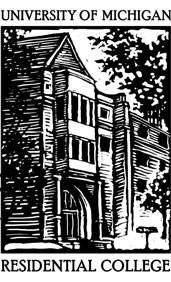Yesterday was an action-packed day. I started the day off by going to Sretinsky (Candlemas or The Presentation of Christ in the Temple) Cathedral originally to speak with Fr. Matthew, but because he was sick I spoke with Reader Michael. After the interview we visited the Soviet/Russian submarine B-440, which was turned into a museum in Vytegra after its retirement in 2005, the lace store, which produces by hand the most beautiful lace I have ever seen, and then the Klyuev museum. To round off the day, we saw off the Vologdans and went ice skating with the Integrands.
It was interesting to discover the differences between the situation of the Church in Vytegra (according to Reader Michael) and the situation of the Church at Svirsky Monastery (according to the monks). While almost everyone in Vytegra calls themselves Orthodox, very few actually attended the services. On any given Sunday, 10-15 people show up and on holidays such as Christmas or Easter, only 40-50. Being an Orthodox Christian in America, where Christmas and Easter services are usually attended by the majority of people who call themselves Orthodox, I was shocked that so few people actually attended church. The submarine was of special interest to me, as I had spent most of my volunteering time at the museum translating its diving protocols and components. Having seen a captured WWII German submarine in Chicago, B-440 was very large and comfortable. Having spent a large amount of time trying to find the English equivalent of “гидро-акустика» «SONAR” at the museum, I took over translation from Sergei on what exactly it is and how it works. Our excursion to the lace shop impressed me immensely on the care and precision that is put into each piece of Vologda-style lace. Hand-made, it is extremely time consuming (our guide said it took 4-500 man hours to create a table cloth). I noticed that the only boys even in the same building as the lace shop were those on the Ruslan ASB trip. I guess that lace making is seen as women's work here.
The stereotype of everyone in the provinces identifying themselves as Orthodox, but never practicing their faith was confirmed for me. The financial lists from the Church back in the 1990s only served for me as additional proof that the vast majority of people see the Church as a positive institution and consider themselves to be members, but are not actively involved. The emphasis of tradition that is true to any heartland was shown to me through the continuance of hand-made lace through venerable techniques. While the Vologdans broke down many stereotypes about the provinces that I had confirmed were true, yesterday only strengthened the provincial stereotypes of honoring tradition and passive support for religion.
Vytegra surprised me in many ways, but it was the little differences between my life in America and life in Vytegra that struck me the most. While the Vytegrans have satellite dishes, modern cars, and all the women dress extremely well in fashions any Parisian, Berliner, or New Yorker would be proud of, the Vytegran skyline of grey brick apartment buildings, off-white stores, private houses in disrepair and the Sretinsky Cathedral with its peeling paint seemed to have dropped out of the late Soviet Union. The separation between public and private space is impressive, the same person who had a cold professional demeanor while speaking with us on the museum tour was an open book of information once we started our volunteer work. The police also made their presence known, with regular car patrols and a public presence on the main roads, something both assuring and disconcerting for a Detroiter used to rarely seeing police at all. Perhaps the greatest difference was the lack of active support for the Church in Vytegra. In America, if you say you belong to a certain denomination or faith, it is understood that you support it financially and probably go to services at least on holy days. Here in Vytegra, everyone I met calls themselves Orthodox, but from my interviews and what I have seen only a handful participate. Vytegra has changed my understanding of the Russian heartland, highlighting the minor differences that flavor life, and confirming the expectations that my pre-trip research had given me on the religious activity in post-communist Russia.


No comments:
Post a Comment